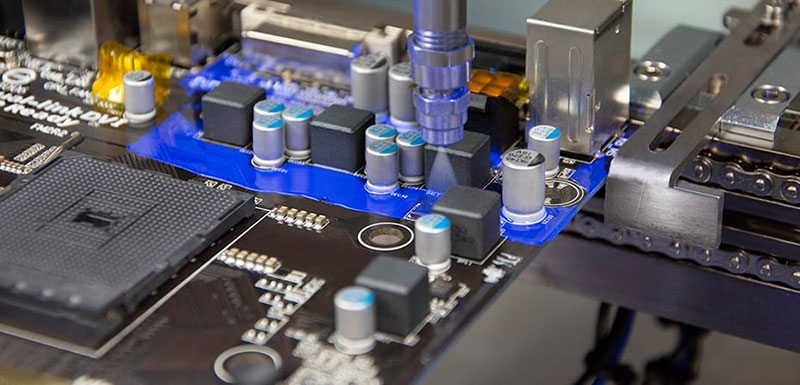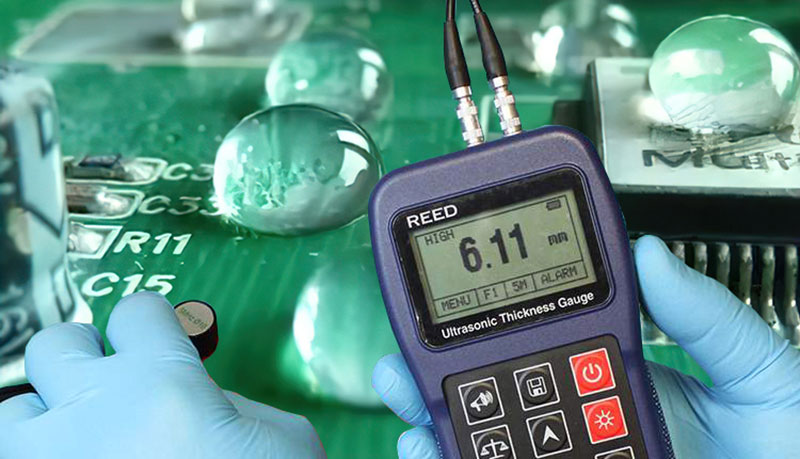What is the reason for the reduction of insulation impedance on the surface of three anti-paint spraying? How to solve the insulation impedance reduction after three anti-paint spraying?
Surface insulation impedance refers to the degree of obstruction of the surface material to the current in the electric field, and is usually used to measure the insulation performance of a material. When the anti-paint coating is sprayed on a surface, if the insulation impedance of the surface is reduced, it means that the anti-paint coating does not provide the expected insulation protection, and there may be a problem of current penetration or leakage on the surface.
Reduced insulation impedance may indicate that the coating has failed to effectively isolate the current, allowing it to pass through or penetrate under the coated surface, which can leave electrical equipment or components at potential electrical hazard. This condition may increase the risk of electric shock, short circuit or damage to electrical equipment.
Therefore, the reduction of surface insulation impedance may be a serious problem, and it is necessary to carefully examine the quality of the coating, the coating technology, environmental conditions, material selection and other aspects to find out the specific reasons for the reduction of insulation impedance, and take appropriate measures to repair and strengthen the insulation performance to ensure electrical safety and the normal operation of the equipment.
What is “three anti-paint”?
“Three anti-paint” usually refers to a special paint, with mildew, moisture and salt spray resistance properties. This paint, when applied to the surface, provides protection against the erosion and damage of the coated object by mildew, moisture or corrosive substances.
Tri-resistant paints are commonly used to protect surfaces made of metal, wood, concrete, or other materials from erosion and damage by water, moisture, chemicals, or environmental factors. This paint can be used externally or internally for the protection of buildings, equipment, pipes, ships, machinery, etc.

Three anti-paint can provide different levels of protection depending on the need, some products may be more focused on water and moisture, while others may be more focused on preventing corrosion. Such coatings typically have strong adhesion and durability, providing long-lasting protection in a variety of environmental conditions.
In general, the “three anti-paint” is a coating with anti-mold, moisture-proof and anti-salt spray properties to protect various surfaces from moisture, moisture and corrosive substances.
What will be caused by the reduction of the surface insulation impedance after the three anti-paint spraying?
1、Electrical safety risk: The deterioration of insulation performance may lead to the weakening of the insulation effect of equipment or circuits, increasing the risk of short circuit, electric shock or fire of electrical equipment. This is extremely dangerous for electrical equipment or systems that require high insulation properties.
2、Equipment failure and damage: Reduced insulation impedance may lead to equipment or circuit failure or damage in use. Reduced insulation performance may cause instability or damage to the performance of the electronic device, thus affecting the normal operation of the device.
3、Decreased production efficiency: For production equipment requiring high insulation performance, decreased insulation performance may lead to frequent equipment failures or downtime for maintenance, thereby reducing production efficiency.
4、Increased costs: The need to repair or replace the affected paint layer to restore insulation performance may add additional costs. In addition, there may be additional repair costs and production losses due to equipment damage or production disruptions.
5、Safety compliance issues: Non-compliance of insulation performance can lead to safety compliance issues, especially in cases where compliance with specific electrical safety standards is required, which can create legal and compliance liability risks for the enterprise or equipment operator.
Why is the surface insulation impedance reduced after three anti-paint spraying?
1、Insufficient surface preparation: If it is not thoroughly cleaned and removed of grease, dirt or residue before spraying, it may affect the adhesion and insulation properties of the paint layer.
2、Coating damage: After spraying, the paint layer may be subjected to mechanical damage, scratching or chemical erosion, which may lead to decreased insulation performance.
3、Inappropriate coating technology: Improper control of temperature, humidity or thickness during coating may lead to poor coating quality, which in turn affects insulation performance.
4、Coating material quality problems: The use of low-quality coatings or coatings that are not suitable for specific environments may also lead to decreased insulation performance.
5、Environmental factors: including temperature, humidity, chemicals and other environmental factors, may affect the performance of the three anti-paint and insulation impedance.

Solution
1、Clean the surface: Make sure the surface is clean before spraying. Sometimes dirt or residue can reduce the insulation impedance, so it is very important to clean the surface.
2、Correct coating thickness: Ensure that the thickness of the coating meets the requirements. If the coating is too thick or too thin, it may affect the insulation performance. Follow manufacturer’s guidelines or relevant standards for optimal coating thickness.
3、Coating quality and technology: Ensure the use of appropriate anti-paint and correct spraying technology. Use good quality, compliant materials and apply them correctly according to the manufacturer’s recommendations or professional technical standards.
4、Curing and baking: Ensure that the coating is fully cured and baked. This helps to ensure that the performance of the three anti-paint is at its best.
5、Detection and repair: If the coating is found to have problems, timely detection and repair. Repairs may include recoating the affected area or reprocessing.
6、Environmental conditions: Ensure that the coating is performed under appropriate environmental conditions, such as appropriate temperature and humidity, to ensure the quality of the coating.
If the above methods do not solve the problem, further professional testing and analysis may be required, and it may be necessary to contact the material manufacturer or professional technicians to obtain recommendations and solutions for the specific situation.


